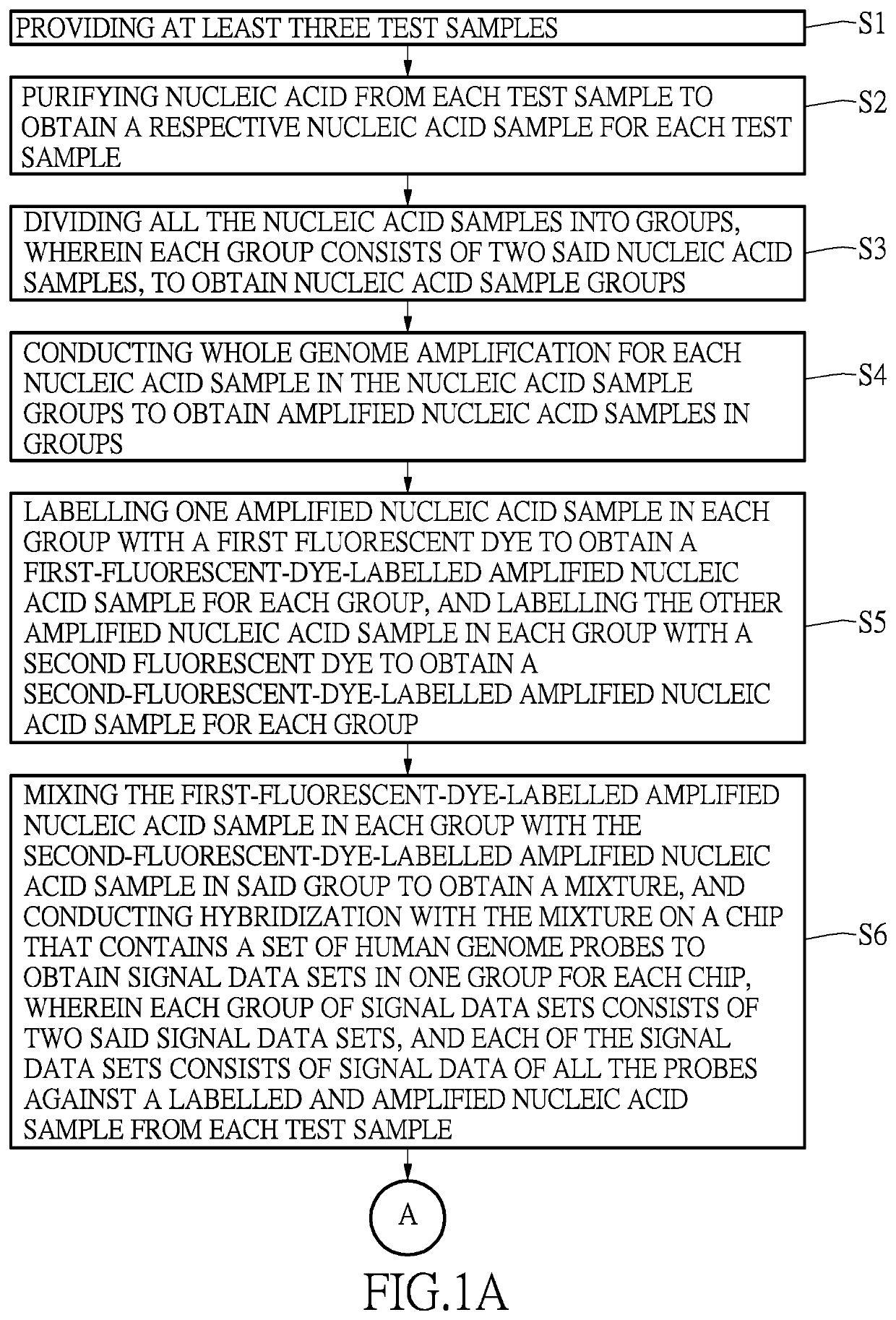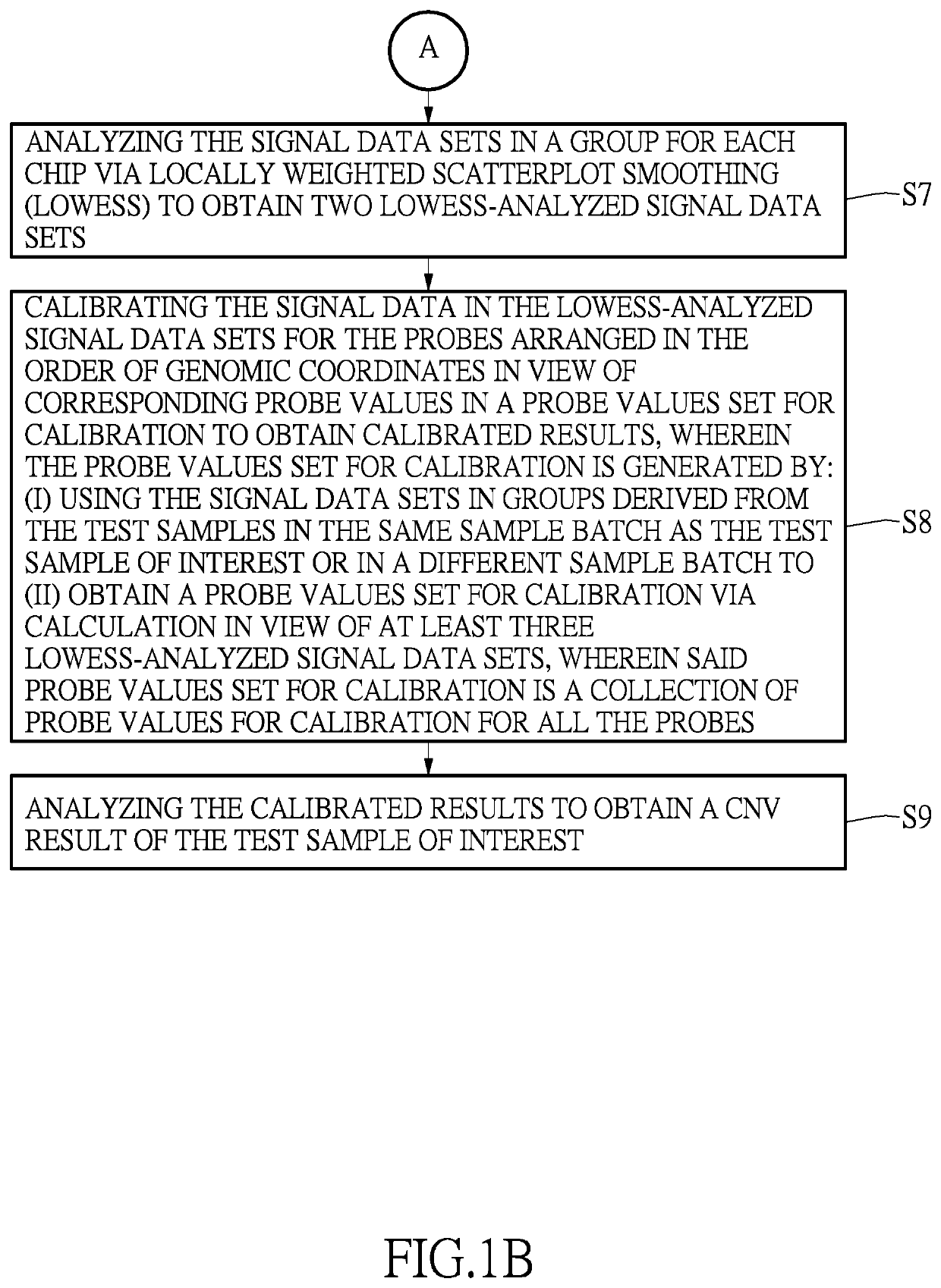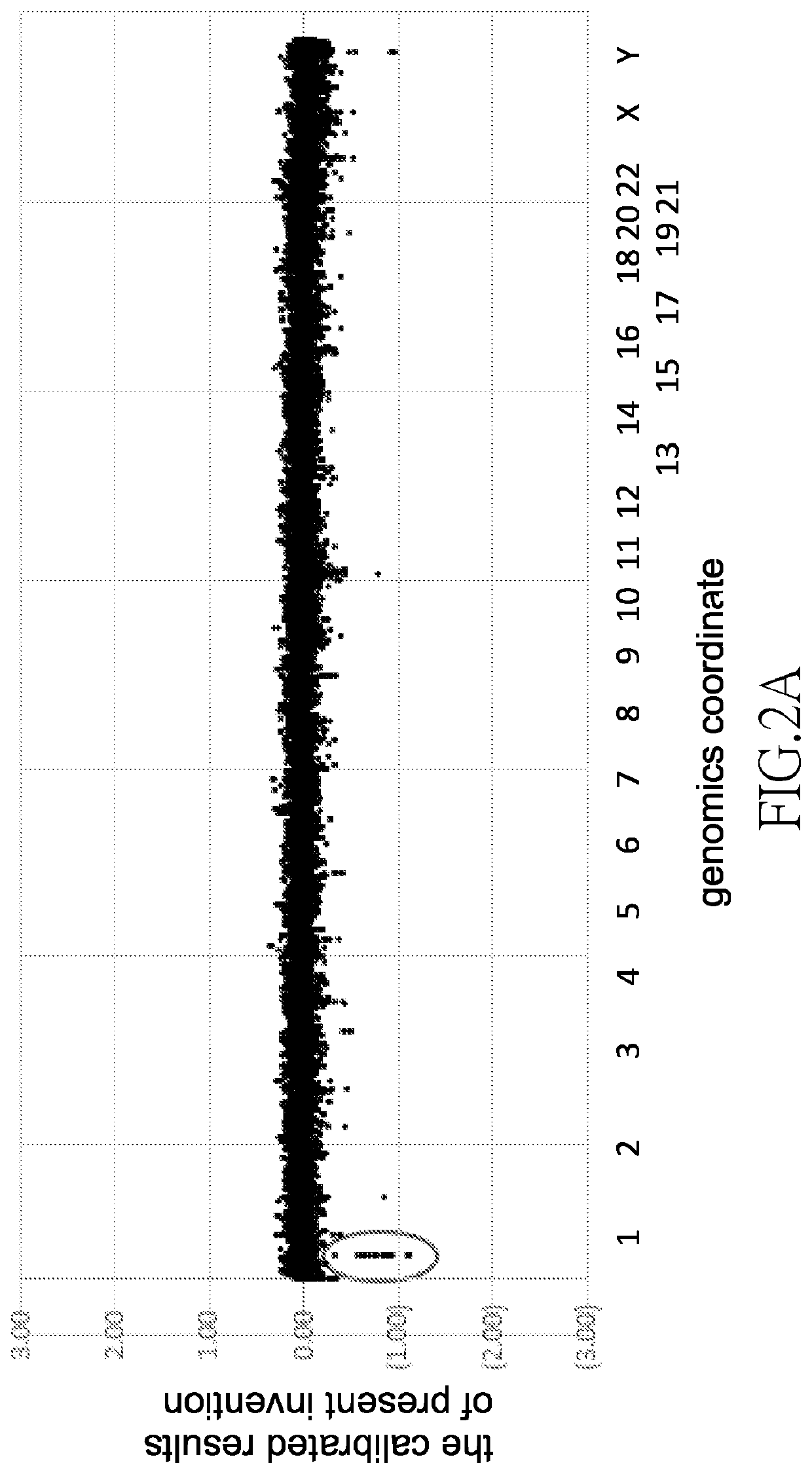Method for detecting copy number variation
a technology of copy number variation and detection method, applied in the field of genome detection, can solve problems such as detection burden
- Summary
- Abstract
- Description
- Claims
- Application Information
AI Technical Summary
Benefits of technology
Problems solved by technology
Method used
Image
Examples
embodiment 1
[0025]First, as shown in step (S1) of FIG. 1A, blood test samples from 20 patients with developmental delay are provided.
[0026]Then, as shown in step (S2) of FIG. 1A, nucleic acid is purified from each blood test sample to obtain a respective nucleic acid sample for each test sample. Particularly, MagPurix 12S System Automated Nucleic Acid Extraction System (Zinexts) and MagPurix Blood DNA extraction kit (Zinexts, cat # ZP02001-48) are used to extract DNA from each blood test sample. The purity of extracted DNA is assessed by the absorbance (O.D. value). The extracted DNA should meet the criteria O.D. 260 / 230>1.0 and O.D. 260 / 280>1.7.
[0027]As shown in step (S3) of FIG. 1A, all the nucleic acid samples are divided into groups, wherein each group consists of two said nucleic acid samples, to obtain nucleic acid groups. That is to say, the 20 DNA samples are randomly divided into groups of two, to obtain DNA sample groups. Every DNA sample group consists of two DNA samples. In other im...
PUM
| Property | Measurement | Unit |
|---|---|---|
| fluorescent | aaaaa | aaaaa |
Abstract
Description
Claims
Application Information
 Login to View More
Login to View More - R&D
- Intellectual Property
- Life Sciences
- Materials
- Tech Scout
- Unparalleled Data Quality
- Higher Quality Content
- 60% Fewer Hallucinations
Browse by: Latest US Patents, China's latest patents, Technical Efficacy Thesaurus, Application Domain, Technology Topic, Popular Technical Reports.
© 2025 PatSnap. All rights reserved.Legal|Privacy policy|Modern Slavery Act Transparency Statement|Sitemap|About US| Contact US: help@patsnap.com



